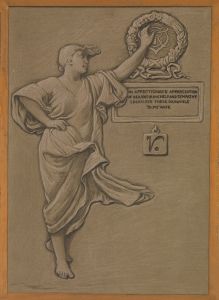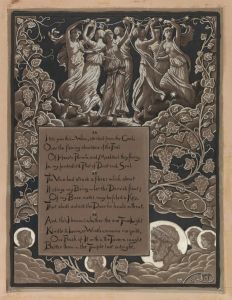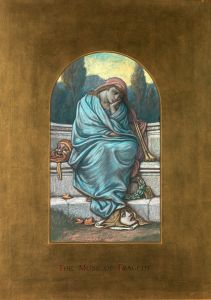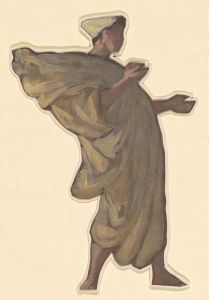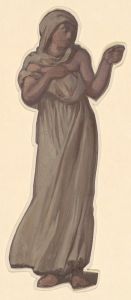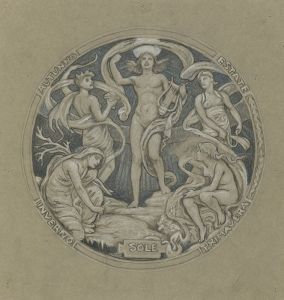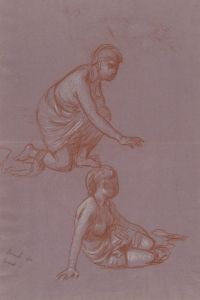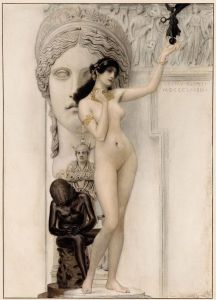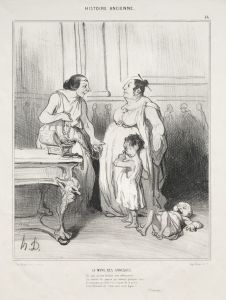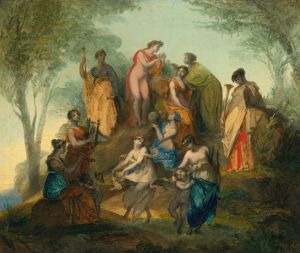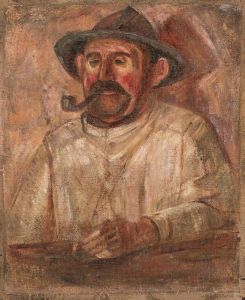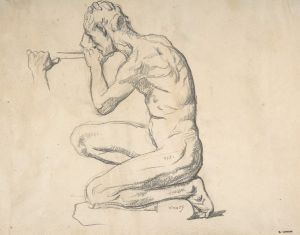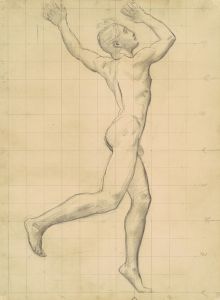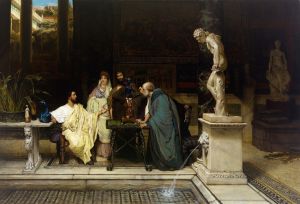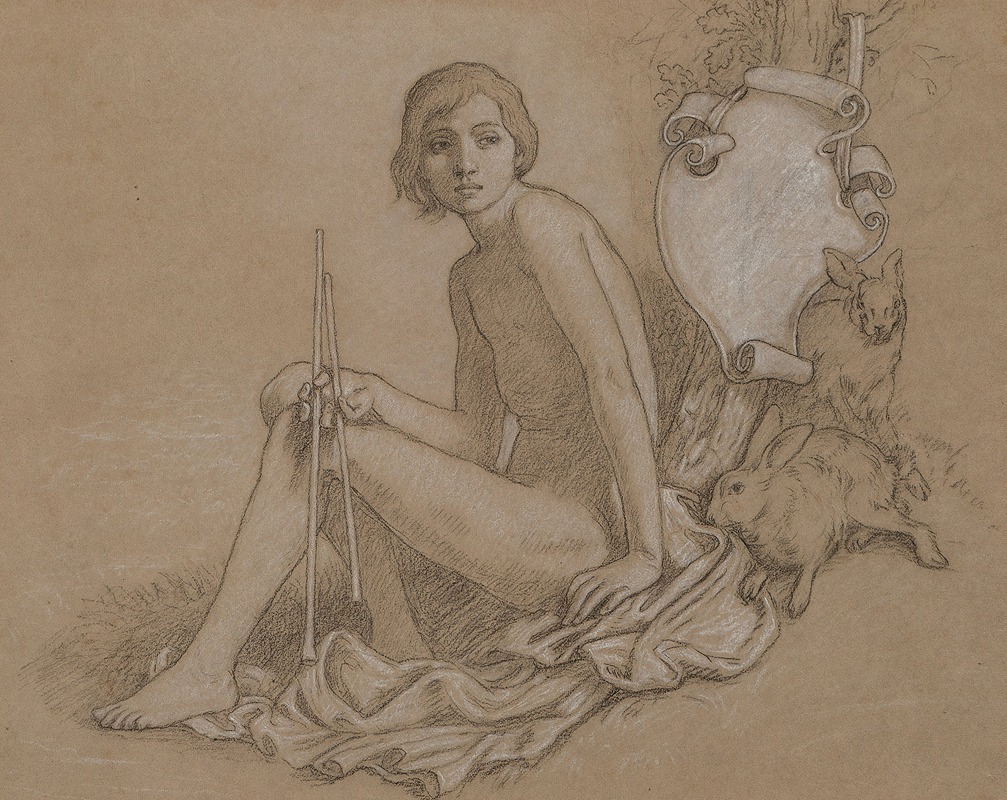
Allegorical Figure with Double Aulos
A hand-painted replica of Elihu Vedder’s masterpiece Allegorical Figure with Double Aulos, meticulously crafted by professional artists to capture the true essence of the original. Each piece is created with museum-quality canvas and rare mineral pigments, carefully painted by experienced artists with delicate brushstrokes and rich, layered colors to perfectly recreate the texture of the original artwork. Unlike machine-printed reproductions, this hand-painted version brings the painting to life, infused with the artist’s emotions and skill in every stroke. Whether for personal collection or home decoration, it instantly elevates the artistic atmosphere of any space.
Elihu Vedder was an American symbolist painter, born in New York City in 1836. He is best known for his mystical and allegorical works, which often incorporate elements of fantasy and symbolism. One of his notable works is "Allegorical Figure with Double Aulos," which reflects his interest in classical themes and his unique artistic style.
"Allegorical Figure with Double Aulos" is a painting that exemplifies Vedder's fascination with allegory and mythology. The double aulos, an ancient Greek wind instrument, is a central element in the composition, suggesting a connection to classical antiquity. The figure in the painting is depicted in a contemplative pose, holding the double aulos, which may symbolize music, harmony, or a deeper philosophical concept. Vedder's use of the aulos could be interpreted as a nod to the muses of Greek mythology, who were often associated with the arts and inspiration.
Vedder's style is characterized by a blend of realism and fantasy, and this painting is no exception. The figure is rendered with meticulous attention to detail, yet the overall composition evokes a dreamlike quality. This duality is a hallmark of Vedder's work, as he often sought to convey complex ideas through his art. The use of light and shadow in the painting adds to its ethereal atmosphere, drawing the viewer into a world that is both familiar and otherworldly.
The painting reflects Vedder's broader artistic interests and influences. He was part of the American expatriate community in Rome during the late 19th century, where he was exposed to a wide range of artistic movements and ideas. This exposure is evident in his work, which often incorporates elements of the Pre-Raphaelite Brotherhood, Symbolism, and the Aesthetic Movement. Vedder was also influenced by his travels in the Middle East and North Africa, which introduced him to new cultural and artistic traditions.
In addition to his paintings, Vedder is known for his illustrations, particularly his work on the Rubáiyát of Omar Khayyám, a collection of Persian poems translated by Edward FitzGerald. His illustrations for the Rubáiyát are considered some of his finest work and demonstrate his ability to translate complex literary themes into visual form. This skill is also apparent in "Allegorical Figure with Double Aulos," where Vedder uses visual symbolism to convey deeper meanings.
Vedder's work, including "Allegorical Figure with Double Aulos," is held in high regard for its technical skill and imaginative vision. His paintings are part of several major collections, including those of the Metropolitan Museum of Art and the Smithsonian American Art Museum. Vedder's legacy is that of an artist who pushed the boundaries of traditional painting, exploring new themes and techniques that continue to inspire artists today.
In summary, "Allegorical Figure with Double Aulos" is a testament to Elihu Vedder's unique artistic vision and his ability to blend classical themes with symbolic meaning. The painting captures the essence of Vedder's style, characterized by its attention to detail, use of symbolism, and dreamlike quality. Through this work, Vedder invites viewers to explore the deeper connections between art, music, and mythology.





